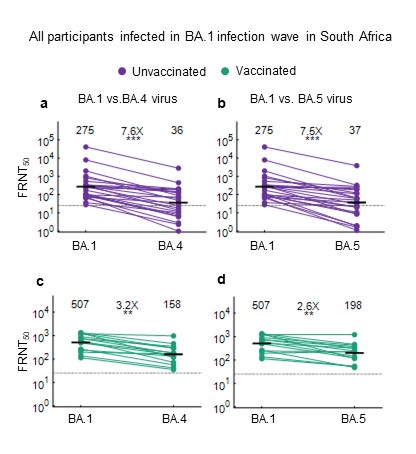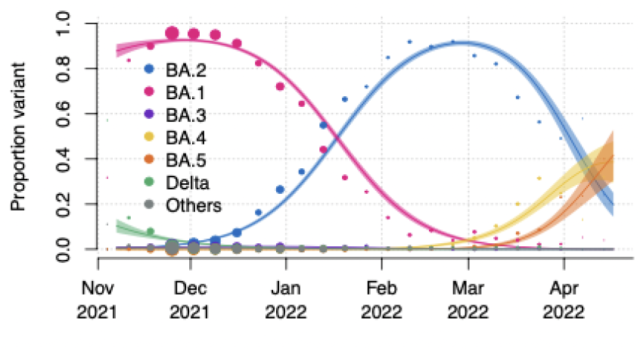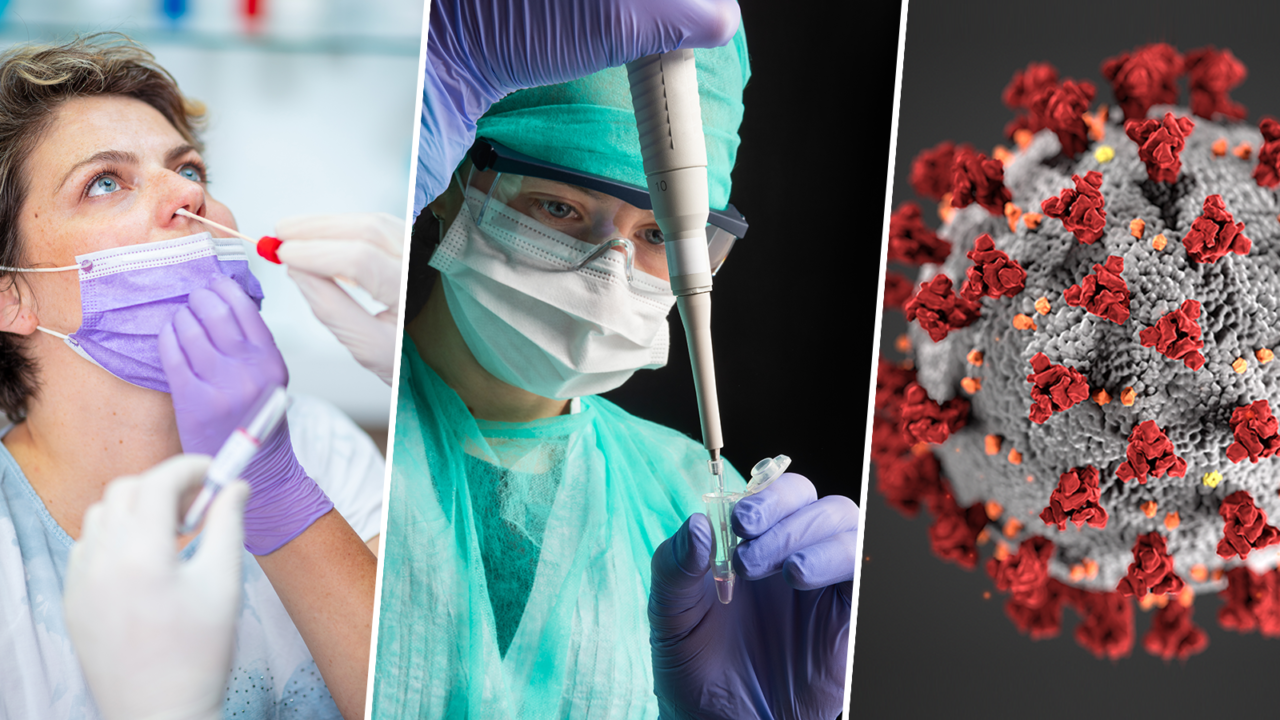Two new strains of COVID that appear to be more transmissible than even “stealth Omicron,” and that have the ability to evade antibodies from vaccination and prior infection, have arrived in the U.S.—and they could mean a new wave is coming.
The World Health Organization (WHO) announced that it is tracking two new subvariants of the virulent Omicron strain of the coronavirus: BA.4 and BA.5. The COVID-19 IHR Emergency Committee met and unanimously agreed that the pandemic remains a public health emergency due to the fact that COVID-19 virus has over time become more transmissible and it remains deadly especially for the unprotected and unvaccinated.
BA.4 and BA.5—like the original Omicron, BA.1—originated in South Africa and despite the fact that almost all South Africans have been vaccinated or had COVID cases are surging there.
Alex Sigal, a professor at the Africa Health Research Institute and one of the authors on a new study that found BA.4 and BA.5 could result in a new wave of infection due to their ability to evade antibodies, both from vaccination and earlier infection recently stated that:
- People who have been both vaccinated against COVID and infected with Omicron may very well get sick if they contract the subvariants; but they probably won’t require hospitalization or die,
- Those who have been infected with COVID prior to Omicron likely don’t have much immunity to BA.4 and BA.5,
- Those who were infected with Omicron but not vaccinated won’t have much immunity either.
Professor Sigal and his team tested the new subvariants against blood samples from individuals who had been vaccinated with shots from Pfizer or Johnson & Johnson, and who had experienced a breakthrough BA.1 infection, as well as those who had been previously infected with BA.1 but had not been vaccinated.
They found that those who had been previously infected but not vaccinated experienced a nearly eightfold drop in neutralizing antibodies when exposed to the new subvariants. Those who had been vaccinated and previously infected saw a more mild threefold decrease, according to the study.
Professor Sigal said he was surprised by the study’s results. He didn’t expect BA.4 and BA.5 to escape immunity so well, especially considering that the variants have only two changes when compared to the original Omicron. “But apparently those are big changes,” he said.

Image 1: Results from Sigallab – testing whether BA.4 and BA.5 can escape neutralizing immunity from previous BA.1 infection
(Source: https://sigallab.net/)
Tulio de Oliveira, the Head of research institutes at the Universities of KwaZulu-Natal and Stellenbosch and one of the South African COVID experts also confirmed that BA.4 and BA.5 appear to be more infectious than BA.2 (aka “stealth Omicron”) which was more infectious than the original Omicron.

Image 2: The growth advantage of Omicron BA.4 and BA.5 over BA.2 and BA.1
(Source: https://twitter.com/Tuliodna)
BA.4 and BA.5 identified in multiple U.S. states
The earliest sample of BA.4 was collected on March 30 and of BA.5 on March 29
Last Friday it was reported that both variants had arrived in the U.S., citing multiple COVID-19 researchers with access to Gisaid, a global research database that provides open access to genomic data of influenza viruses and the corona virus responsible for the COVID-19 pandemic.
“BA.4 sequences have been identified in samples from multiple U.S. states,” Professor Andy Pekosz, PhD, a virologist at the Johns Hopkins Bloomberg School of Public Health, told the Fortune magazine, adding that the variant is clearly circulating in the U.S., “it’s just not clear precisely how widely.”
Madison Stoddard, a COVID-19 researcher, confirmed last Friday that there were 12 cases of U.S.-sequenced BA.4 in GISAID, an international research database that tracks changes in COVID and the flu virus, with the earliest collected on March 30. There were also five cases of BA.5 sequenced in the U.S. as of Friday, with the earliest collection date of March 29, they said.
The BA.4/BA.5 symptoms to watch
Most common symptoms are very similar to cold and flu, and they include fever, headache, loss of smell and taste, sore throat, runny nose. People also experience body pain, skin rashes, red or irritated eyes, chest pain, difficulty in breathing and loss of speech
Recently, people infected with Omicron BA.2 were also showing gut-related syndrome like Nausea, Diarrhea, Vomiting, Abdominal pain, Heartburn, Bloating.
“I haven’t seen early symptoms of respiratory distress with BA.4 and BA.5, the major COVID-specific symptom that makes this disease so dangerous,” Professor Sigal said. “It doesn’t feel nice, but there’s less chance of dying.”
There is “good evidence” that COVID is becoming milder with time, he said, due to the fact that it’s not infecting the lower respiratory tract, where permanent damage can happen and dangerous low blood oxygen saturations can be triggered. So far, newer COVID variants reside in the upper respiratory tract, where they’re unlikely to cause serious illness.
Until recently, experts thought that a new, very different variant would be required to cause a wave, as was the case with Delta. But now subvariants “seem to be able to make a new wave,” Sigal said.
Subvariants—including BA.4 and BA.5—worry him less than new variants. “They’re not so different from what was there before. They’re not going to do a huge amount of damage even though they might do a lot of infection,” he said. “When I see something completely different, that’s when it’s time to really get concerned.”
As the WHO and CDC continue to closely monitor variances, as well as conduct independent and comparative analyses of the different corona viruses, Verséa Holdings will continue to provide the best available SARS -CoV-2 diagnostics tests.
To see all available tests, please visit: CliaSupply
For customized pricing contact our representatives at 1-800-397-0670


